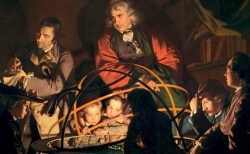Anthony Gottlieb in Spiked:
In 2000, scholar, writer and then executive editor at The Economist Anthony Gottlieb received widespread acclaim for the first installment of his survey of Western philosophy, The Dream of Reason, which covered thought from the Greeks to the Renaissance. This year, its remarkable sequel, The Dream of Enlightenment, emerged. Focusing on that ‘150-year burst’ of intellectual energy that begins in Northern Europe after the Thirty Years War, and stretches up to the eve of the French Revolution, Gottlieb provides a profoundly illuminating portrait of an era in which the battles fought (and sometimes won) were to pave the way for the modern age. The spiked review caught up with Gottlieb to discuss toleration, freedom and the many misconceptions that have, at points, turned Enlightenment thinkers into caricatures of themselves.
 review: What really comes through in The Dream… is the extent to which many Enlightenment thinkers were immersed in the natural sciences, in ‘mechanical philosophy’, practically and theoretically. Indeed, as The Dream… reveals, Descartes thought of himself principally as a mathematician and scientist, and Spinoza was famed for his microscopic technology. What’s striking, however, is that they were not only able to reconcile their religious faith with the natural sciences; they actually used natural sciences, the method of mechanical philosophy, to prove the existence of God…
review: What really comes through in The Dream… is the extent to which many Enlightenment thinkers were immersed in the natural sciences, in ‘mechanical philosophy’, practically and theoretically. Indeed, as The Dream… reveals, Descartes thought of himself principally as a mathematician and scientist, and Spinoza was famed for his microscopic technology. What’s striking, however, is that they were not only able to reconcile their religious faith with the natural sciences; they actually used natural sciences, the method of mechanical philosophy, to prove the existence of God…
Gottlieb: Yes, it was certainly common throughout the period to think that the more science shows you about nature, the more it showed the evidence of God. Isaac Newton (1643-1727) was very specific about this. He endorsed what we now call the argument of design, that is, the idea that there is evidence of design in nature. Newton thought that the further you looked into the workings of the natural world, the more you saw the evidence of God. And most Enlightenment thinkers, except for Hume and some after him, accepted that idea.
More here.
